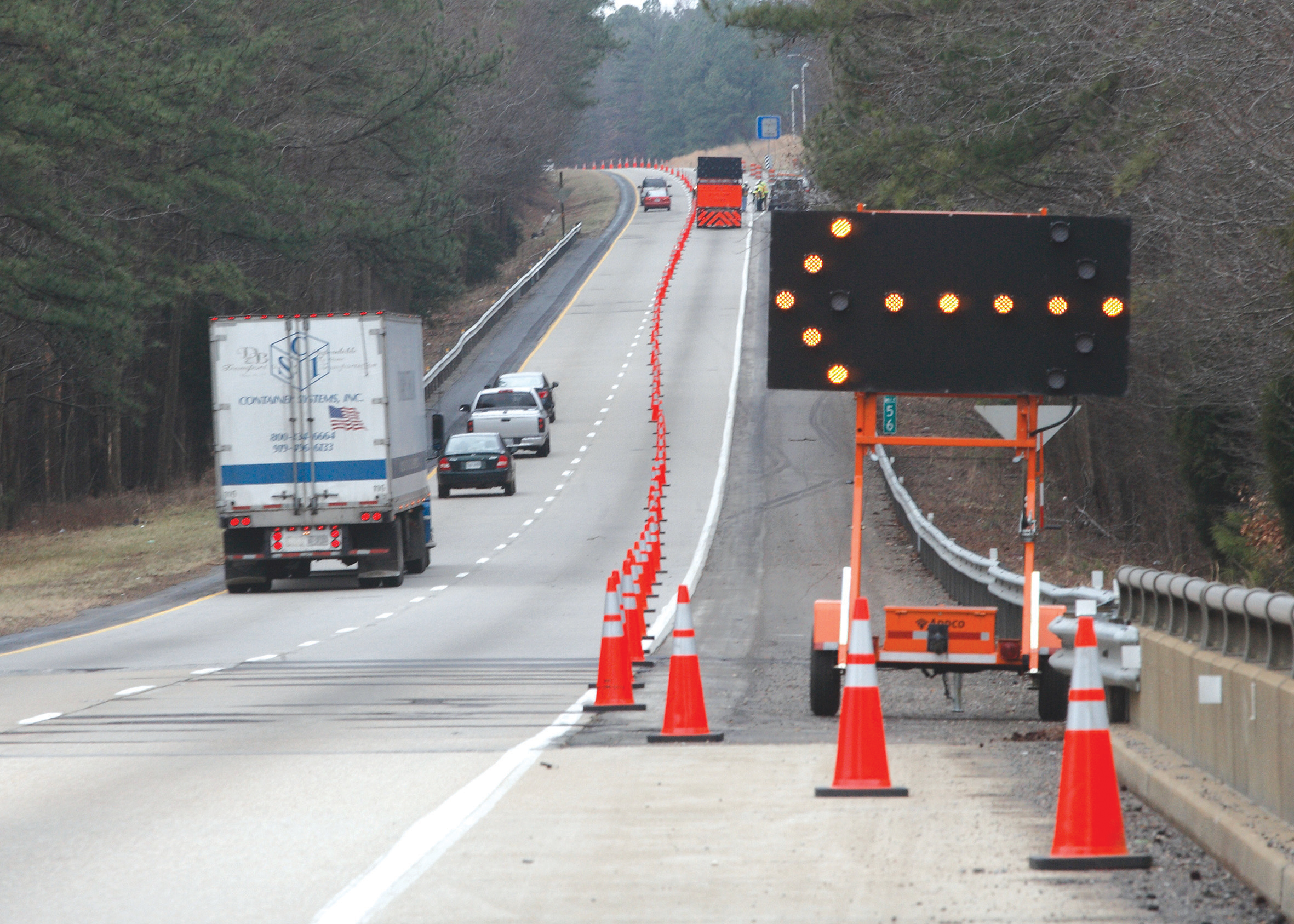
One of the most active US states when it comes to ITS application in work zones, Virginia has produced its own version of ATSSA's Manual on Uniform Traffic Control Devices
David Crawford investigates progress in a key safety area - work zones
Highway construction zone safety is taken seriously enough in the US to merit a special spring National Work Zone Awareness Week, which in 2010 ran from 19-23 April. Headed by theThe 2010 focus was on inattentive driving around work zones. Among the most common distracting activities listed by the US
In the long term, the FHWA's emphasis is on the importance of detailed pre-planning for road construction work. Tracy Scriba, who leads on ITS for the FHWA's Work Zone Mobility and Safety Team, stresses the importance of road agencies fully understanding the likely work zone impacts of projects and taking appropriate early actions to manage them.
The key, she says, is using appropriate modelling and simulation tools to carry out effective analysis: "The results from analysing work zone impacts can help an agency improve its decision-making as well as its overall understanding of the mobility, financial, environmental, safety and user cost aspects of its decisions".
The FHWA has now published a series of specially developed guides to help agencies use the tools to develop realistic and achievable Transportation Management Plans (TMPs). Work zone impact analysis, Scriba points out, may involve a high-level, qualitative review for some projects and a detailed, quantitative analysis for others. Key considerations include: mobility and safety impacts at both corridor and the network levels; the combined impacts of concurrent projects in close proximity; and impacts on emergency evacuation routes.
ATSSA's role
A key player alongside the FHWA is theOne winner was the Texas, US-based arm of Croatian company
Another winner was Montreal, Canada-headquartered
Before its installation, highway workers had manually to close a lane four times a day to move a median on the Louis Bisson Bridge, on a curved road section with vehicles passing at 100km/h or more. The company claims that activation can be effected within five minutes.
State programmes
All US states have their own work zone safety programmes. One of the most active in the field of ITS applications is theIt has already created its own version of the MUTCD to include stronger requirements for temporary traffic management: "The use of larger, more visible and closer spaced traffic control devices has played an important role in reducing the number of work zone crashes we experience every year," VDOT's Marshall Barnhill told ITS International.
VDOT's goal is to reduce work zone crashes to below 2,000 a year and deaths to zero per year. Among recent implementations of ITS technology, it has effected one of the earliest US installations of Variable Speed Limits (VSLs) at a work zone in the highly complex, multi-year, 13km Woodrow Wilson Bridge project in the Northern Virginia/ Washington, DC area.
The system constantly assesses traffic conditions through in-road sensors and uses an algorithm to assign optimal speed limits, which change automatically in response to travel flows, for posting on upstream changeable message signs. Initially deployed only when construction required lane closures, the VSL programme was expanded in May 2009 to full-time use.
A recent report from the Virginia Transportation Research Council on the effectiveness of VSL recommends that VDOT continues to pursue the technology, but "carefully to scrutinise" issues of algorithm design and VSL sign placement. Its cost/benefit analysis indicates that the technology may be most appropriate for long-term applications.
European projects
Recognising the value of international experience, the It plans, for example, to make greater use of electronic signage to avoid the need for on-road equipment that has to be physically put in place. Specifically it is exploring, in the light of Scottish and Welsh practice, scope for a wider range of variable message sign legends (to tell motorists when live personnel are working at the site).
It also now has available a rapid-deployment version of UK company
A new TRL decision support tool of interest to the HA is GPS Traffic Viewer (GPS TV), which can use traffic speed and location data to enable assessment of the impact of roadworks by providing user-friendly visualisation. "This can be very useful in locating potential accident sites when flow data isn't available," TRL's Iain Rillie told ITS International.
In Sweden, June 2010 sees the first product release of e-Road Safety (ERS), a roadworks information and warning system based on the identification and location of operating personnel and, eventually, equipment. Swedish ITS company VTS, which owns and will market ERS, has developed it in collaboration with road maintenance provider
"We recognise," Svevia's ITS & Traffic Safety R&D Coordinator Urban Ericsson told ITS International, "that the approach for major road construction sites is often to build a physical traffic environment that prevents speeding. Where this is not possible, however, we need a complementary ITS-based product." As typical applications, he points to roundabout construction, bridge repairs or paving train movements.
ERS uses radar units to measure the speed and identify the type of vehicle approaching the work zone, initially from a point between 200 and 300m upstream. If the vehicle is moving too fast, or is an HGV (creating the risk of slipstream close to the work zone boundary), the system alerts construction workers via a vibrating wristband or backstrip (depending on situation and choice) which is designed to overcome the problem of site noise.
At around 50m upstream, a second radar unit rechecks the vehicle. If this is still moving too fast, workers receive a second warning while the system also activates a message sign warning drivers 'DU KÖR FÖR FORT' ('You are driving too fast').
Within the work zone, it then measures the vehicle speed for a third time, on this occasion from the rear, and, if it is still travelling too fast, activates a second warning sign for drivers.
ERS positions construction workers (and plant) using a high-accuracy local system. "We don't use GPS because its accuracy is too low", says Ericsson. "But, as a later step, we will evaluate the EU's new Galileo array to see if it is accurate enough."
In Germany, the government-funded 2008-2012 Safe and Intelligent Mobility Testfield Germany (SIM-TD) project includes development of a roadworks information and navigation system in its wide-ranging car-to-x communications emit. Project leader
In the rural roads scenario - one of three based on specific highway types - the focus is on testing systems for obstacle warning and information on construction sites.












